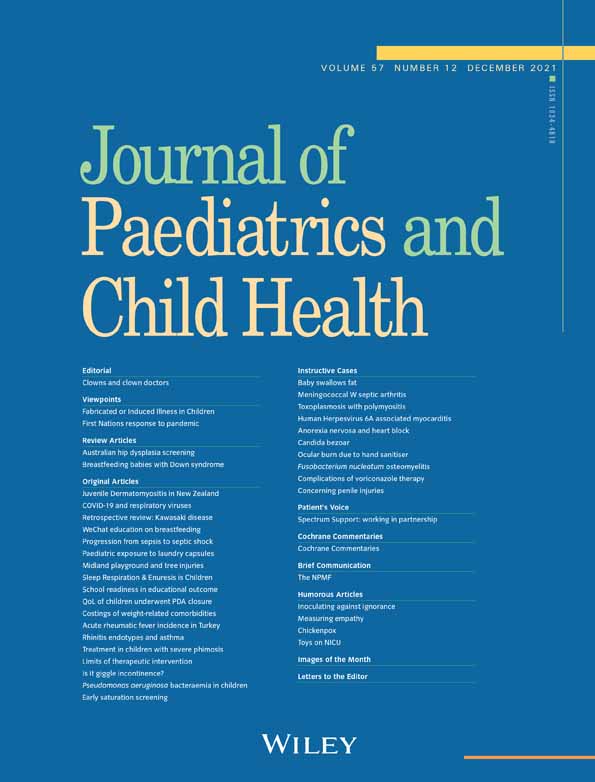Retrospective review of Kawasaki disease at the Women's and Children's Hospital, South Australia
Conflict of interest: None declared.
Abstract
Aim
Kawasaki disease (KD) is one of the most common causes of acquired cardiac disease in children in high-income countries. The incidence of coronary artery disease (CAD), despite treatment with intravenous immunoglobulin, ranges from 5 to 20%. Determining risk factors for CAD may assist with management and reduce long-term complications.
Methods
Retrospective data were collected for all patients presenting to the Women's and Children's Hospital with a discharge diagnosis of KD over a 10.5-year period, from 2007 to 2018.
Results
A total of 141 patients were included in the review; 101 patients fulfilled complete criteria for KD; 25 incomplete criteria and 15 did not meet criteria but were treated for KD. CAD was present in 27.7% of all patients, ranging from ectasia to giant aneurysms based on Z-scores and echocardiogram descriptions. Medium to large aneurysms accounted for 8.5% of all patients with suspected KD. Patients with CAD were more likely to: fulfil incomplete criteria (odds ratio (OR) 4.3, 95% confidence interval (CI) 1.7–10.8, P = 0.0027), be less than 12 months of age (OR 11.38, 95% CI 2.94–44.11, P = 0.0001), have CRP > 100 (OR 2.8, 95% CI 1.31–6.02, P = 0.0068) and have a delay in treatment (average day of illness prior to treatment 8.89 vs. 6.78 (OR 1.19, 95% CI 1.05–1.35, P = 0.0055)). Patients with a Kobayashi score ≥4 had a higher rate of re-treatment with intravenous immunoglobulin (OR 3.16, 95% CI 1.27–7.83, P = 0.013).
Conclusion
Our data are consistent with previously reported risk factors, and high rates of CAD despite standard treatment.




